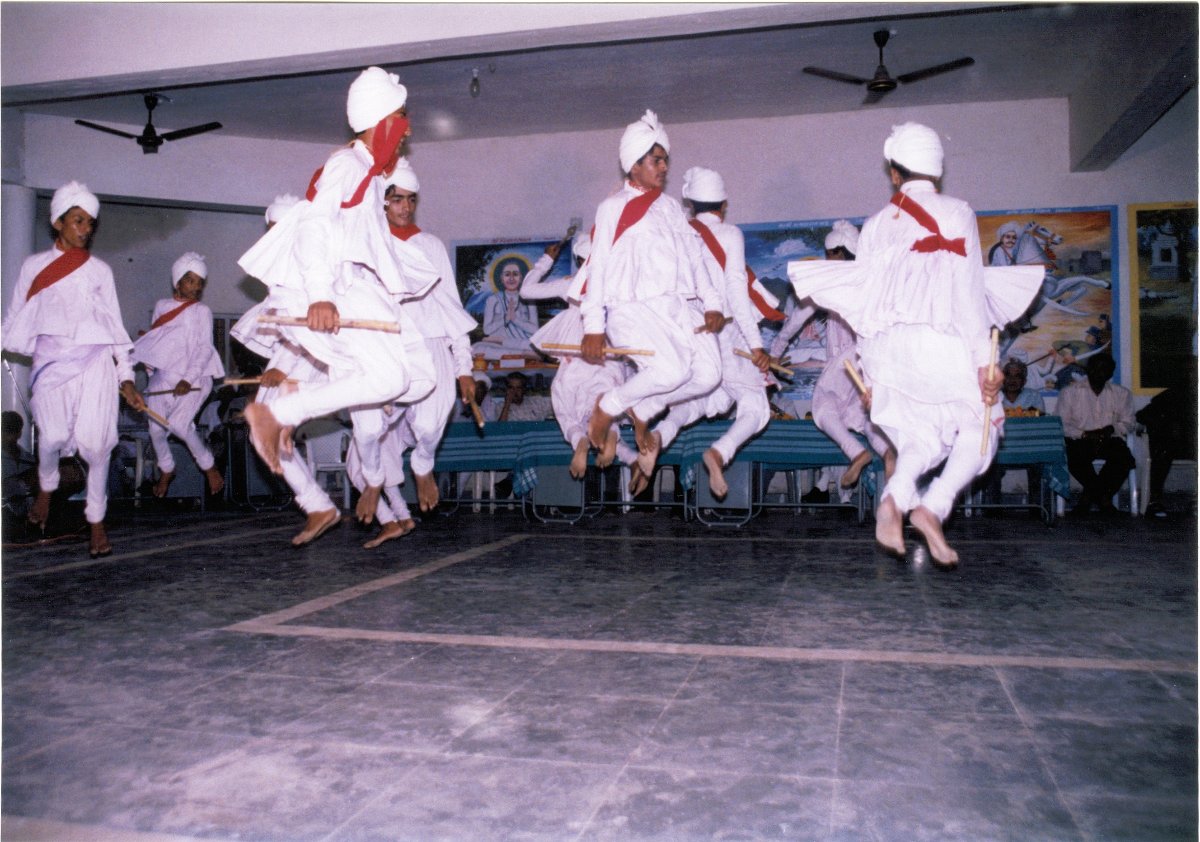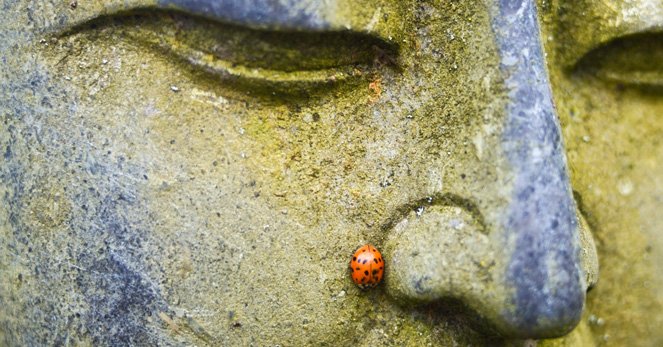There have been a plethora of articles on the independent health effects of meditation and vigorous exercise, but a dearth on the synergistic effects of combining them. In this post, I suggest that maximum effects can be obtained by bracketing or breaking up your day with an hour of intense physical exertion and an hour of complete serenity realized through deep contemplation or meditation. I am offering myself as an N of 1 for this study, but I’m hoping that, after you read the research, you will join me in this effort to optimize your possibilities.

Therapeutic interventions that incorporate training in mindfulness meditation have become increasingly popular, but to date little is known about neural mechanisms associated with these interventions. Mindfulness-Based Stress Reduction (MBSR), one of the most widely used mindfulness training programs, has been reported to produce positive effects on psychological well-being and to ameliorate symptoms of a number of disorders. The results suggest that participation in MBSR is associated with changes in gray matter concentration in brain regions involved in learning and memory processes, emotion regulation, self-referential processing, and perspective taking.
In a practical application of this research, as reported in the New York Times, Mark T. Bertolini, the 58-year-old chief executive of Aetna, the health insurer, was sitting in his Hartford office wearing a dark suit and a crisp, white, French-cuffed shirt. But instead of a necktie, he wore a shiny metal amulet engraved with the Sanskrit characters “sohum.”
Roughly translated, sohum means “I am that,” and repeating the phrase is used to help control breathing in meditation. Mr. Bertolini says the word also signifies a divine connection with the universe. (He has a similar design tattooed on his back.)
In recent years, following a near-death experience, Mr. Bertolini set about overhauling his own health regimen, as well reshaping the culture of Aetna with a series of eyebrow-raising moves. He has offered free yoga and meditation classes to Aetna employees; more than 13,000 workers have participated. Aetna says participants show increased productivity, and report less stress and pain.
As a result of his commitment to health and fairness, Bertolini has transformed a stodgy insurance company into one of the most progressive actors in corporate America. Aetna’s stock has increased threefold since Mr. Bertolini took over as chief executive in 2010, and recently hit a record high. It’s a decidedly groovy moment for the company, and Mr. Bertolini is reveling in his role as an idealistic, unconventional corporate chieftain.
More than one-quarter of the company’s work force of 50,000 has participated in at least one class, and those who have report, on average, a 28 percent reduction in their stress levels, a 20 percent improvement in sleep quality and a 19 percent reduction in pain. They also become more effective on the job, gaining an average of 62 minutes per week of productivity each, which Aetna estimates is worth $3,000 per employee per year. Demand for the programs continues to rise; every class is overbooked.
I could cite numerous other examples of the effects on productivity and performance from mindfulness training. For example, Due Quach, the founder of Calm Clarity (www.calmclarity.org) has demonstrated improvements in resilience, purpose, and positive emotions as well as reductions in peak stress levels, frequency of toxic stress, and negative emotions.
Independently, there is also a large body of research that shows the effects of exercise on health. One of the most fascinating studies was conducted in Finland with identical twins that enabled the researchers to eliminate potentially confounding genetic and environmental variables.
As reported in the New York Times, it turned out that these genetically identical twins looked surprisingly different beneath the skin and skull. The sedentary twins had lower endurance capacities, higher body fat percentages, and signs of insulin resistance, signaling the onset of metabolic problems. (Interestingly, the twins tended to have very similar diets, whatever their workout routines, so food choices were unlikely to have contributed to health differences.)
The twins’ brains also were unalike. The active twins had significantly more grey matter than the sedentary twins, especially in areas of the brain involved in motor control and coordination.
Presumably, all of these differences in the young men’s bodies and brains had developed during their few, brief years of divergent workouts, underscoring how rapidly and robustly exercising — or not — can affect health, said Dr. Urho Kujala, a professor of sports and exercise medicine at the University of Jyvaskyla who oversaw the study. Dr. Kujala said he believes that the results strongly imply that the differences in the twin’s exercise habits caused the differences in their bodies.
More subtly, the findings also point out that genetics and environment “do not have to be” destiny when it comes to exercise habits. For these particular twins, whether their genes and childhoods nudged them toward exercising regularly or slumping on the couch, one of the pair overcame that legacy and did the opposite (for better and worse).
In addition to the physical benefits of exercise, both short-term exercise and long-term aerobic exercise training are associated with improvements in various indexes of psychological functioning. Cross-sectional studies reveal that, compared with sedentary individuals, active persons are more likely to be better adjusted to perform better on tests of cognitive functioning, to exhibit reduced cardiovascular responses to stress, and to report fewer symptoms of anxiety and depression. Exercise training reduces depression in healthy older men and in persons with cardiac disease or major depression. Exercise also improves self-confidence and self-esteem, attenuates cardiovascular and neural responses to mental stress, and reduces some type A behaviors. Although exercise training generally has not been found to improve cognitive performance, short bouts of exercise may have short-term facilitative effects. Vigorous, high-intensity exercise appears to boost the results.
Regardless of the variation of methods used to report exercise intensities, a consistent pattern appeared with the findings. All of the epidemiology studies that have controlled for energy expenditure found greater cardio-protective benefits from the higher aerobic exercise intensities as compared to the moderate aerobic exercise intensities. As a matter of fact, no epidemiological study has reported a greater cardio-protective benefit from moderate intensity versus vigorous aerobic exercise. The clinical studies showed very similar results. When energy expenditure was controlled for in the study, the vigorous exercise intensity was more beneficial in altering one or more risk factors to coronary heart disease. Specifically, in relation to the coronary heart disease, the #1 cause of mortality in America, aerobic exercise of a more vigorous type resulted in lower incidences.
So it’s fairly safe to say that the independent effects of meditation and vigorous exercise are profound. The question is, what would happen if we combined them, i.e. an hour per day of serenity and an hour per day of intensity?
For the last 20 years, I have maintained a disciplined routine of incorporating serenity and intensity in my life. I lift weights three times per week at the local gym and walk 5-10 miles per day. In addition, I practice meditation, qigong, and Energy’s Way (www.energysway.com) everyday. Yes, I have missed days and weeks, but not many.
On February 11 of this year, I turned 70. To celebrate, my wife and I spent two weeks hiking in Patagonia. We were able to walk up to 14 miles per day on very challenging trails in the Andes. I returned feeling energized and calm. I acknowledge that I am very lucky to have the time and resources to exercise, meditate, and travel as much as I do. I also know that if I didn’t include these disciplines in my life, I would have a much harder time managing my ADHD, ODD, OCD, and Tourette Syndrome. I not only have the motivation to incorporate serenity and intensity in my life, I also have the need, the skills, and the support – all of the elements of successful change programs.
If you are a researcher, I encourage you to conduct a double blind, randomized control trial on the synergistic effects of meditation and vigorous exercise. If you are just trying to muddle your way through the stresses and challenges of everyday life, I encourage you to include more serenity and intensity in your life.
Also published on Medium.



